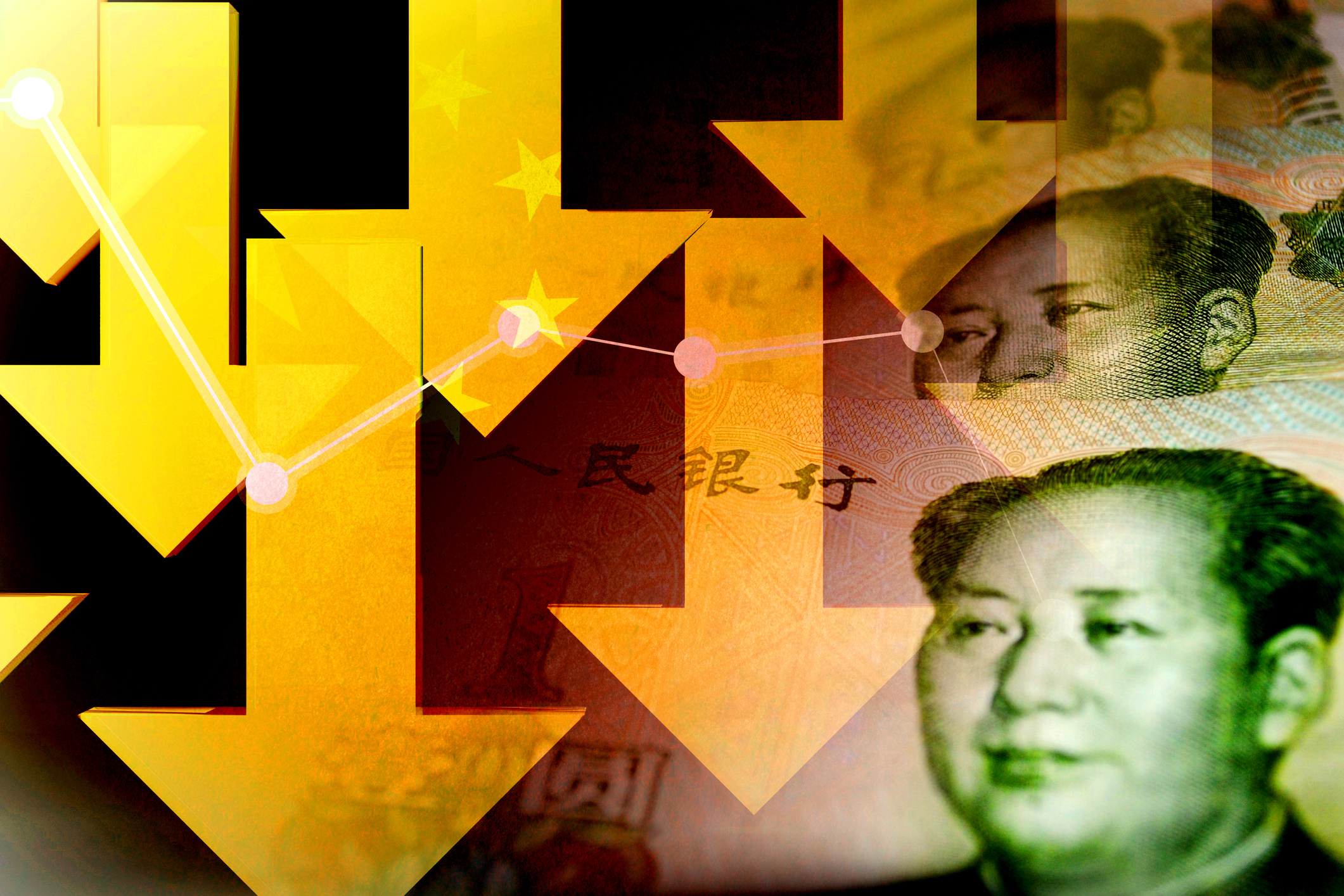The end of China’s boom
Like the US, China too got fat on fake money. Now, China's doom is not far away.

The thing that doomed the American empire more than any other was its currency. When the US substituted a fake, paper-only, dollar in 1971, it set in motion a financial doomsday machine.
For a long time, it seemed to Americans and foreigners alike to be a blessing, an “exorbitant privilege”. We didn’t have to make things; we could just print money. Since the dollar was the world’s “reserve currency”, other nations took it willingly and even lent it back to us by buying more of our bonds. But now, the great weakness of paper money is (once again) becoming apparent. Since it can be produced at will, it can also be lent out at will – but in a crunch, it gives way.
When the US switched from asset-backed money (dollars backed by gold) to a credit-backed system (dollars backed by an IOU from the US government) it lost its anchor. Gold is limited – and precious. People are careful with it. And when the wind picks up, it holds fast.
MoneyWeek
Subscribe to MoneyWeek today and get your first six magazine issues absolutely FREE

Sign up to Money Morning
Don't miss the latest investment and personal finances news, market analysis, plus money-saving tips with our free twice-daily newsletter
Don't miss the latest investment and personal finances news, market analysis, plus money-saving tips with our free twice-daily newsletter
Typically, in a correction or a crisis, prices fall and money becomes more valuable. People discover they’ve made mistakes. Those who’ve put their faith in promises and speculations lose money. Asset prices fall. And those who have real money can buy up the distressed assets and get back to work. In a fake money system, however, the money reserves at the heart of the system – “invested” in US bonds – don’t become more valuable; they disappear.
US banks have some $685billion in unrecognised losses. These reserves were not really a solid asset, but a dubious credit, in which the world’s largest debtor promised to pay its debts with its own fake money. Now, in a pinch, they discover that they aren’t worth what they paid for them. What can banks do? For now, it’s “don’t ask, don’t tell”. They’re hoping the Fed will lower rates this year; then, things will go back to “normal” — the value of their bonds will go back up. In other words, the only way a fake money system can hold together is for the Fed to create more of its fake money, and lend it out at fake rates.
Inflate – and make the next crisis worse.
China's doom loop
That is not just a problem for the US. It’s also a big problem for its fellow delusional, China. Americans thought they could buy things they couldn’t afford, using their new fake money. China thought it could sell products to people by lending them the money to buy them.
Now, the whole fandango has reached a new phase. Chinese factories turned out finished products at low prices; consumer prices, worldwide, fell. This left Chinese exporters with a lot of money – and an almost insatiable optimism. They spent, they borrowed, they invested in more productive capacity, counting on the boom to continue. Economies adjust to whatever conditions they’ve recently experienced. And after 40 years of the fastest expansion ever recorded on planet Earth, many of China’s capital investments now depend on impossibly high rates of growth.
Alas, the boom has come to an end, leaving the Chinese with unsold apartments, silent factories, empty trains – and billions of dollars worth of debt. China’s pool of cheap, abundant labour has been completely drained and wages have soared.
Once the most productive uses of credit are satiated, the new money “flows into unproductive speculation and financial skimming operations”, as analyst Charles Hugh Smith points out. “At that point, all the new money flooding into the system drives inflation.”
And now, China – with billions, perhaps trillions, of dollars worth of “unproductive speculations” – faces a credit meltdown. Its “money” is disappearing along with its customers and its asset prices.
What can it do, but replace the fake money with more fake money – just as the US does? This is probably not the end of China’s drive for full-spectrum dominance of the world economy, but it sure looks like the end of the 1979-2021 boom.
Get the latest financial news, insights and expert analysis from our award-winning MoneyWeek team, to help you understand what really matters when it comes to your finances.
Bill Bonner is an American author of books and articles on economic and financial subjects. He is the founder of Agora Financial, as well as a co-founder of Bonner & Partners publishing.
-
 5 investment trusts for your pension
5 investment trusts for your pensionInvestment trusts are often a good choice for long term growth and income options, but which ones should you consider for your pension?
-
 Inheritance tax climbdown as agricultural property relief threshold raised
Inheritance tax climbdown as agricultural property relief threshold raisedReforms to agricultural property relief had sparked strong opposition, and the government has now diluted its controversial inheritance tax plans for farmers
-
 Stock markets have a mountain to climb: opt for resilience, growth and value
Stock markets have a mountain to climb: opt for resilience, growth and valueOpinion Julian Wheeler, partner and US equity specialist, Shard Capital, highlights three US stocks where he would put his money
-
 The steady rise of stablecoins
The steady rise of stablecoinsInnovations in cryptocurrency have created stablecoins, a new form of money. Trump is an enthusiastic supporter, but its benefits are not yet clear
-
 SRT Marine Systems: A leader in marine technology
SRT Marine Systems: A leader in marine technologySRT Marine Systems is thriving and has a bulging order book, says Dr Michael Tubbs
-
 Goodwin: A superlative British manufacturer to buy now
Goodwin: A superlative British manufacturer to buy nowVeteran engineering group Goodwin has created a new profit engine. But following its tremendous run, can investors still afford the shares?
-
 A change in leadership: Is US stock market exceptionalism over?
A change in leadership: Is US stock market exceptionalism over?US stocks trailed the rest of the world in 2025. Is this a sign that a long-overdue shift is underway?
-
 A reckoning is coming for unnecessary investment trusts
A reckoning is coming for unnecessary investment trustsInvestment trusts that don’t use their structural advantages will find it increasingly hard to survive, says Rupert Hargreaves
-
 Modern Monetary Theory and the return of magical thinking
Modern Monetary Theory and the return of magical thinkingThe Modern Monetary Theory is back in fashion again. How worried should we be?
-
 Metals and AI power emerging markets
Metals and AI power emerging marketsThis year’s big emerging market winners have tended to offer exposure to one of 2025’s two winning trends – AI-focused tech and the global metals rally